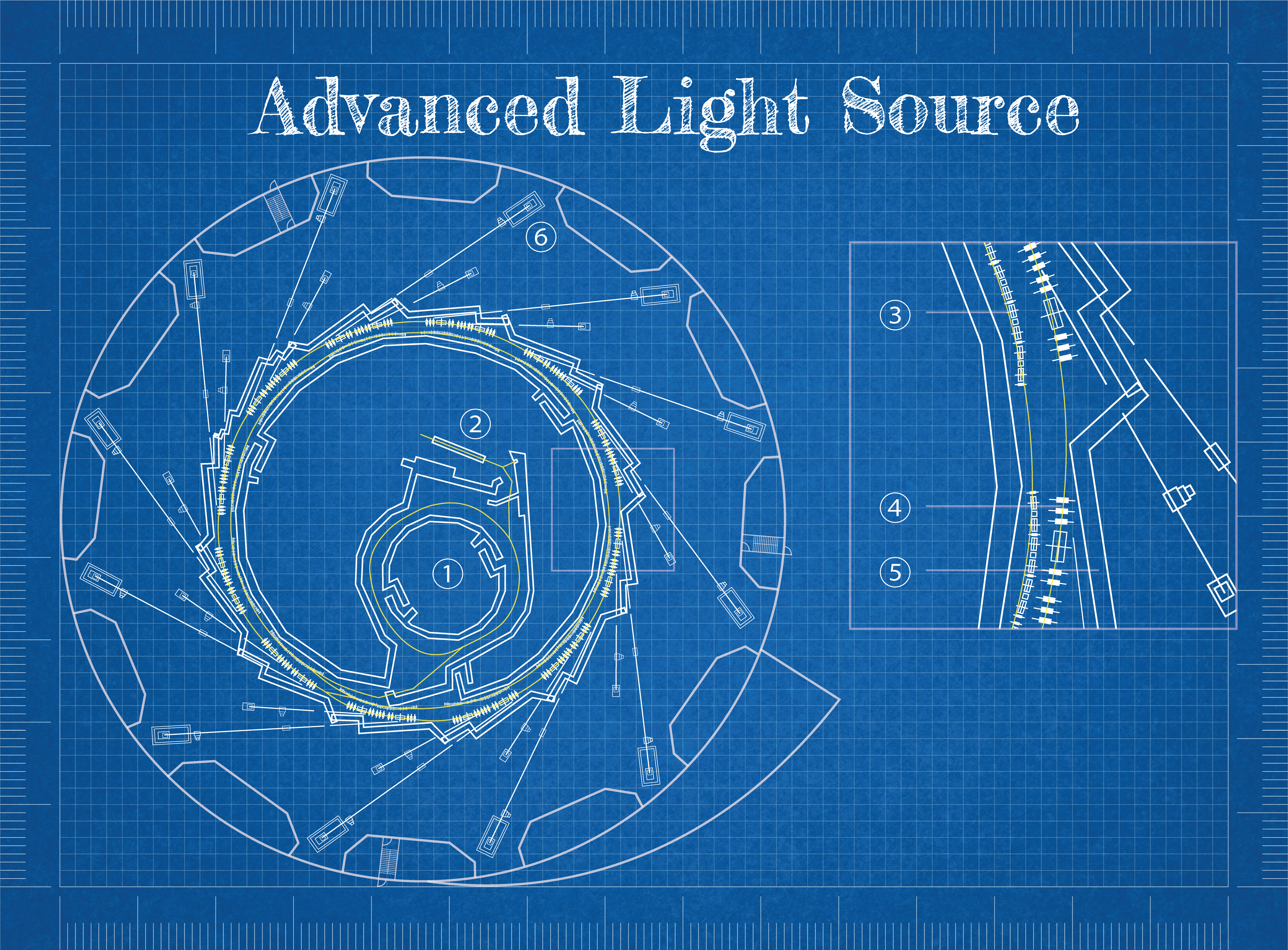Synching up with Synchrotrons

Most people in Berkeley are likely familiar with the sight of the large dome-shaped building perched atop the hills overlooking campus. This dome at Lawrence Berkeley National Laboratory (LBL), previously housing the largest iteration of Ernest Lawrence’s early particle accelerators called cyclotrons, now houses the Advanced Light Source (ALS), a third-generation synchrotron light source. The synchrotron facility is used by groups from all over the world due to both the scale of the light source and the specialized nature of the light it generates, which enables a whole host of experiments at nearly 50 different beamlines. Using the synchrotron radiation from the various beamlines, users of the facility can perform a wide array of experiments using techniques such as spectroscopy, microscopy, and diffractometry to characterize their samples. With just a quick walk from campus to the floor of the synchrotron, it provides a unique and invaluable research tool to groups here at Berkeley.
Synchrotrons are large circular particle accelerators that can speed up charged particles to a fraction of the speed of light, and then use them to generate bright pulses of X-ray light which travels tangentially to the particle accelerator along what is referred to as a beamline. This light can then be directed to a sample using conventional mirrors. By studying the way the light interacts with the sample, information about the material and its properties can be inferred. Synchrotrons work on the principle that a charged particle (in this case an electron) can be accelerated by steering it along a circular path with a strong magnetic field and using electrodes to push the particles to ever-faster speeds. By simply increasing the magnetic field strength and electrode frequency in step with the increasingly fast electrons, synchrotrons can keep the electrons following the same path while achieving unprecedented particle speeds. Under these conditions, charged particles can be accelerated well beyond the limitations (e.g. increasing effective mass at relativistic speeds) faced by early accelerators. Today, synchrotrons such as the Large Hadron Collider operate using these same principles as the ALS to accelerate charged particles to over 99% the speed of light.
Light generated by synchrotrons is an unavoidable outcome of using magnets to apply force on charged particles perpendicular to the direction they were going. To keep electrons going in a circle, one must repeatedly apply a magnetic field to turn the electrons, and this generates photons with an energy proportional to the acceleration the electrons undergo. While this was initially thought of as a parasitic effect requiring constant energy input to keep particles in the synchrotron going a constant velocity, it was quickly realized that the generation of this light could be controlled and utilized in other experiments. To do this, devices that make the electrons “undulate” as they pass through have been developed to efficiently generate light at a variety of different wavelengths. These undulators consist of tens to hundreds of strong magnets arranged in an alternating pattern to stimulate the production of light ranging from the infrared to X-rays and even gamma-rays. Using this device, the properties of the light produced can be modified by experimentalists in seconds with just a few clicks in the control software. Because light does not change direction in a magnetic field but charged particles do, the electrons continue on their circular path around the synchrotron while the light continues straight until mirrors can direct it to the diverse range of experiments at the end of the beamline.
Since synchrotron light spans a large part of the light spectrum, there is an incredibly diverse range of experiments that can be performed using it. These experimental techniques include spectroscopy, microscopy, and scattering, all of which can be used for anything from testing fundamental physics and new synchrotron techniques to determining the structure of proteins and new materials and everything in between. “Synchrotrons provide us with insights about the world never seen before,” remarked Zach Donnellan, a PhD candidate in the Gessner (LBL) and Neumark (UC Berkeley) groups working in the Chemical Sciences Division at LBL. “For instance, in my work I’m watching electrons move in real-time between layers of light harvesting materials or solar cells.” By performing experiments at the ALS, Zach and his colleagues have gained a better fundamental understanding of how these materials behave. This will allow future materials to be more efficient and less degradable. Zach continues, "Carrying out synchrotron experiments can yield a greater understanding of biological systems, materials such as semiconductors, environmental systems and climate change, quantum materials and computing, and energy storage and conversion technologies that cannot be discovered doing tabletop experiments.”
In the coming years, the ALS will be undergoing a years-long overhaul to incorporate new state-of-the-art technology developed thanks to recent breakthroughs in accelerator physics. These upgrades will increase the amount of X-ray light produced by the synchrotron by at least a factor of 100, keeping the work performed there on the cutting-edge of scientific discovery and enabling increasingly difficult and innovative experiments. Some of these experiments include emerging important and impactful scientific fields such as catalytic chemical transformations and energy conversion and storage.
This article is part of the Spring 2023 issue.


